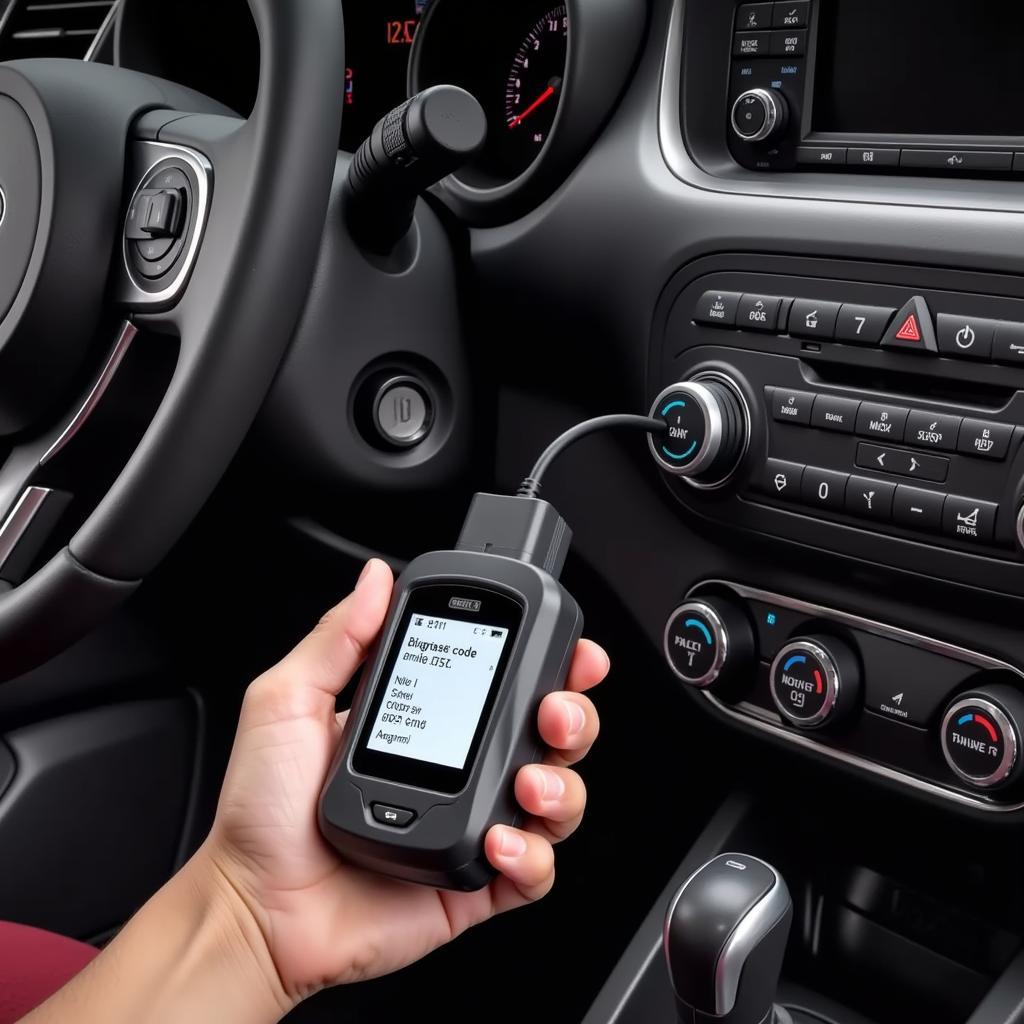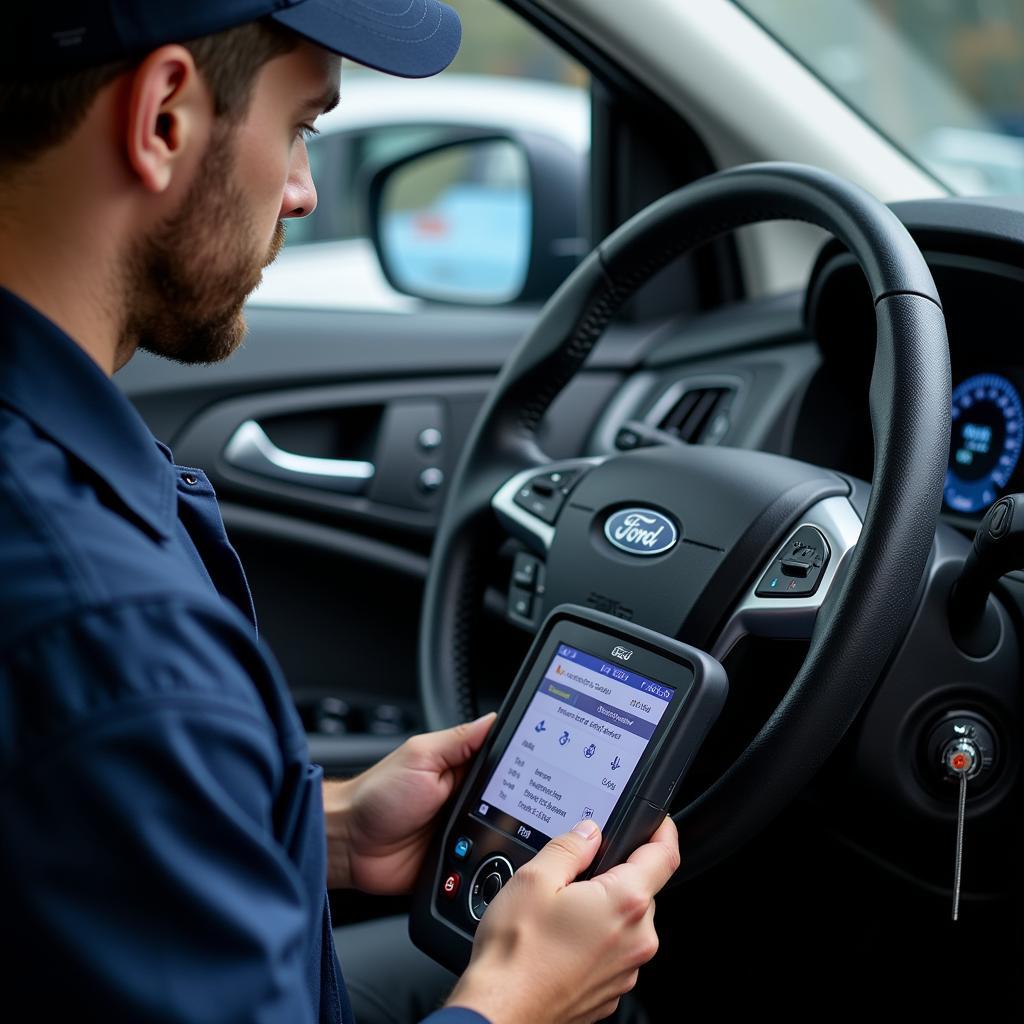Imagine you’re driving down a busy street, and suddenly your engine starts to sputter and cough. You hear a strange noise and feel a loss of power. Your first instinct is to pull over and check what’s wrong. You suspect it’s a misfire, but how do you confirm it and what should you do next?
This is where a scan tool comes in handy. A scan tool is an indispensable tool for mechanics and car enthusiasts alike, allowing them to diagnose a variety of engine issues, including misfires.
Understanding Misfires and Scan Tools
A misfire occurs when one or more cylinders in your engine fail to ignite properly, leading to a variety of symptoms like engine stuttering, rough idling, and reduced power. This can be caused by a range of factors, from faulty spark plugs and ignition coils to problems with the fuel system or even a faulty sensor.
A scan tool, also known as an OBD2 scanner, can help you pinpoint the source of the misfire by reading diagnostic trouble codes (DTCs) stored in your car’s computer. These codes are specific to the problem at hand and can provide invaluable insights into the cause of the misfire.
Using a Scan Tool to Test Misfire While Driving
1. Connect the Scan Tool
Start by connecting the scan tool to your car’s OBD2 port, typically found under the dashboard.
2. Access Live Data
Once connected, navigate to the “Live Data” section of your scan tool. This displays various parameters in real-time, including engine speed, fuel trim, and misfire counts.
3. Look for Misfire Counts
Pay close attention to the misfire counts for each cylinder. These counts represent the number of times a cylinder has misfired during a specific timeframe.
4. Analyze the Misfire Counts
A high misfire count for a particular cylinder indicates a potential problem with that cylinder’s ignition or fuel system.
5. Conduct a Road Test
While observing the live data, take your car for a test drive. This allows you to see how the misfire counts change under various driving conditions.
6. Record Data and Analyze
Record the misfire counts at different speeds and under different driving conditions. This data will be essential in determining the cause of the misfire.
Why is it Important to Test While Driving?
Testing misfire while driving is crucial because it helps to identify the cause of the misfire, which is not always clear while the car is stationary. Many issues like faulty sensors may only manifest themselves during specific driving conditions.
Frequently Asked Questions
1. Can I diagnose a misfire without a scan tool?
While a scan tool provides a more comprehensive diagnosis, you can sometimes identify a misfire by listening to the engine sounds, feeling for vibrations, or noticing a change in the engine’s performance.
2. What are some common causes of misfires?
Common causes of misfires include faulty spark plugs, ignition coils, fuel injectors, and even problems with the fuel pump or air filter.
3. What should I do if my scan tool shows a misfire?
If your scan tool identifies a misfire, it’s best to have your car inspected by a qualified mechanic who can pinpoint the exact problem and recommend the necessary repairs.
Additional Tips
- Use a reputable scan tool: Investing in a reliable and accurate scan tool is crucial for accurate diagnosis.
- Refer to your car’s owner’s manual: Your owner’s manual contains detailed information about your car’s OBD2 port location and other relevant information.
- Consider using specialized scan tools: If you’re working on a specific vehicle, like a European car, you may need a specialized scan tool that is compatible with that vehicle’s make and model.
Conclusion
Using a scan tool to test misfire while driving is an invaluable tool for diagnosing and understanding a variety of engine problems. By following the steps outlined above, you can gain valuable insights into the cause of the misfire, allowing you to make informed decisions about the necessary repairs.
If you’re unsure about using a scan tool or have any questions about misfire diagnosis, don’t hesitate to contact a qualified mechanic. Remember, a timely diagnosis and repair can prevent serious damage and ensure your vehicle runs smoothly and safely.
Have you had any experience using a scan tool to test misfire while driving? Share your experiences and insights in the comments below!
Looking for more information about automotive diagnostics? Explore our other articles on using a scan tool to diagnose stalling, best scan tools for 2001 Maxima, and scan tool issues for 1999-5.9 Dodge.
Need expert help with your diagnostics tool? Contact us on Whatsapp: +84767531508. We offer 24/7 support from our team of qualified mechanics.


